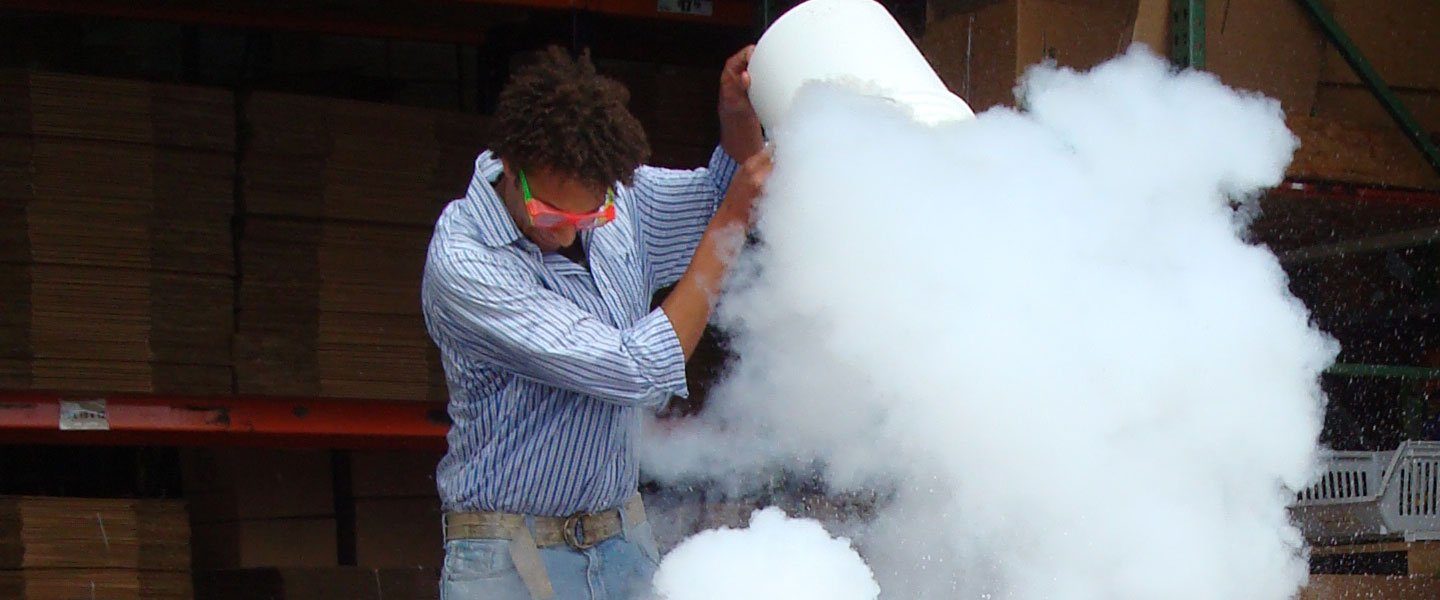Do it Yourself Weather Vane
Early weathermen and women didn’t use Doppler radar or computers to forecast the weather, they relied on tools that were much more simple. Take, for […]

Sometimes “clouds” are needed as a special effect to move low across a set or a stage. This creates a dramatic effect for a dream sequence, a spooky scene, or someone flying. The special effects crew has a few tricks up their sleeves to pull it off, too. While it looks really cool, liquid nitrogen IS really cool at about -320℉ (-196℃). This effect takes training and uses equipment not usually laying around a home so leave it to the experts (but enjoy the video).
As cool as this is and as many times as Steve has done it, he always wears safety equipment. Hey, it’s just smart science!
Adding liquid nitrogen to hot tap water will safely make a ton of billowing white clouds. Since the vapor is just water and nitrogen, it’s safe to breathe, too. Notice that after its initial upward rush, the vapor falls because it’s much colder than the air around it.
Sometimes. the special effects folks need a lot of clouds for a scene. With a simple order switch, that can be arranged. Keep in mind, however, that the right safety equipment is called for as well.
The simple switch is adding the hot water to the liquid nitrogen. The reaction is literally explosive! All those water and nitrogen molecules instantly expand to vapor and the huge cloud that results blasts upward.
Notice that, once again, the cloud falls to the ground because it’s colder than the air around it. Because there’s so much of it, the cloud quickly spreads in all directions over the ground, too.
Nitrogen (N2) gas makes up about 79% of the air we breathe so it’s a part of your everyday breathing experience. On the other hand, liquid nitrogen (LN2) is not. Normally, gasses like to fill spaces and spread out into all the tiny spaces available. At normal air pressure, nitrogen becomes a liquid only if the temperature is between -346 and -320°F (-210 and -196℃). Nitrogen can freeze and become a solid at lower temperatures. At “warmer” temperatures, nitrogen boils and becomes a gas again.
Since it is made with atmospheric gasses, liquid nitrogen is relatively inexpensive. in a dish, liquid nitrogen looks like plain boiling water. It’s usually not refrigerated when it’s stored but kept in insulated containers called Dewar [doo-er] jars where it’s allowed to boil away back into the air. Depending on the design of the Dewar, liquid nitrogen can be stored from hours up to a few weeks. Since it is boiling, most liquid nitrogen used in labs and in special effects is about -320℉ (-196℃).
Keep these safety rules in mind when you work (play?) with liquid nitrogen.